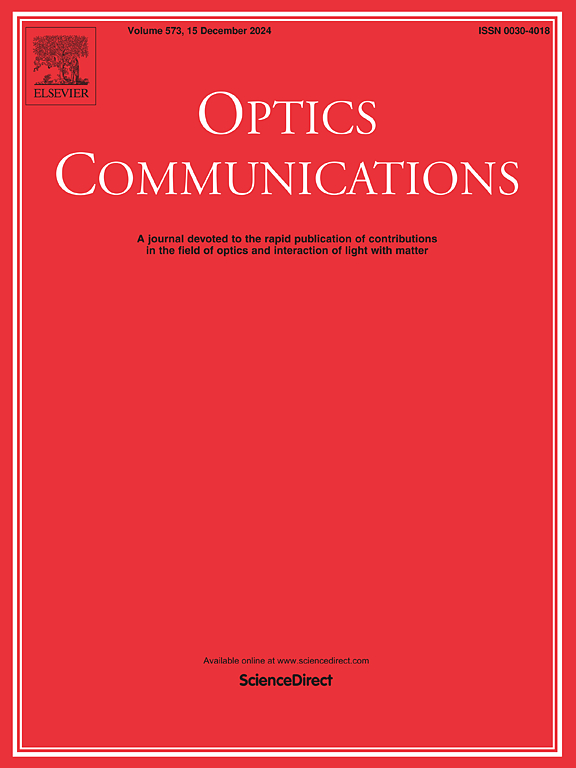Ultrawide-field-of-view ultrahigh-spectral-resolution imaging spectrometer based on a grating-beamsplitter interferometer
IF 2.2
3区 物理与天体物理
Q2 OPTICS
引用次数: 0
Abstract
An ultrawide-field-of-view ultrahigh-spectral-resolution imaging spectrometer (UFOV-USR-IS) based on a grating-beamsplitter interferometer is presented, which consists of an imaging microlens array arranged in a spherical crown, multiple fibers, a collimating microlens array arranged in a straight line, a grating-beamsplitter interferometer, and a detector. The light collected by each imaging microlens sequentially passes through a fiber and a collimating microlens, then enters the grating-beamsplitter interferometer and is finally received by a pixel array on the detector (e.g. 2 × 2 pixels when the pixel size is 20 μm). For each imaging microlens, the light collected from a single object unit generates an interferogram during one scanning cycle. Combining the outputs of all imaging microlenses results in an ultrawide field of view (e.g. 120° × 30° or 120° × 60°). The relevant formulas and error analysis are derived. The preliminary design and calculation are given. The simulation for the interferogram and spectrum is shown by an example with the spectral range from 900 nm to 1700 nm. The UFOV-USR-IS will be suitable for two-dimensional ultrawide-field-of-view ultrahigh-spectral-resolution spectral imaging in the near-infrared, short-wave infrared, or mid-wave infrared spectral region.
求助全文
约1分钟内获得全文
求助全文
来源期刊

Optics Communications
物理-光学
CiteScore
5.10
自引率
8.30%
发文量
681
审稿时长
38 days
期刊介绍:
Optics Communications invites original and timely contributions containing new results in various fields of optics and photonics. The journal considers theoretical and experimental research in areas ranging from the fundamental properties of light to technological applications. Topics covered include classical and quantum optics, optical physics and light-matter interactions, lasers, imaging, guided-wave optics and optical information processing. Manuscripts should offer clear evidence of novelty and significance. Papers concentrating on mathematical and computational issues, with limited connection to optics, are not suitable for publication in the Journal. Similarly, small technical advances, or papers concerned only with engineering applications or issues of materials science fall outside the journal scope.
 求助内容:
求助内容: 应助结果提醒方式:
应助结果提醒方式:


